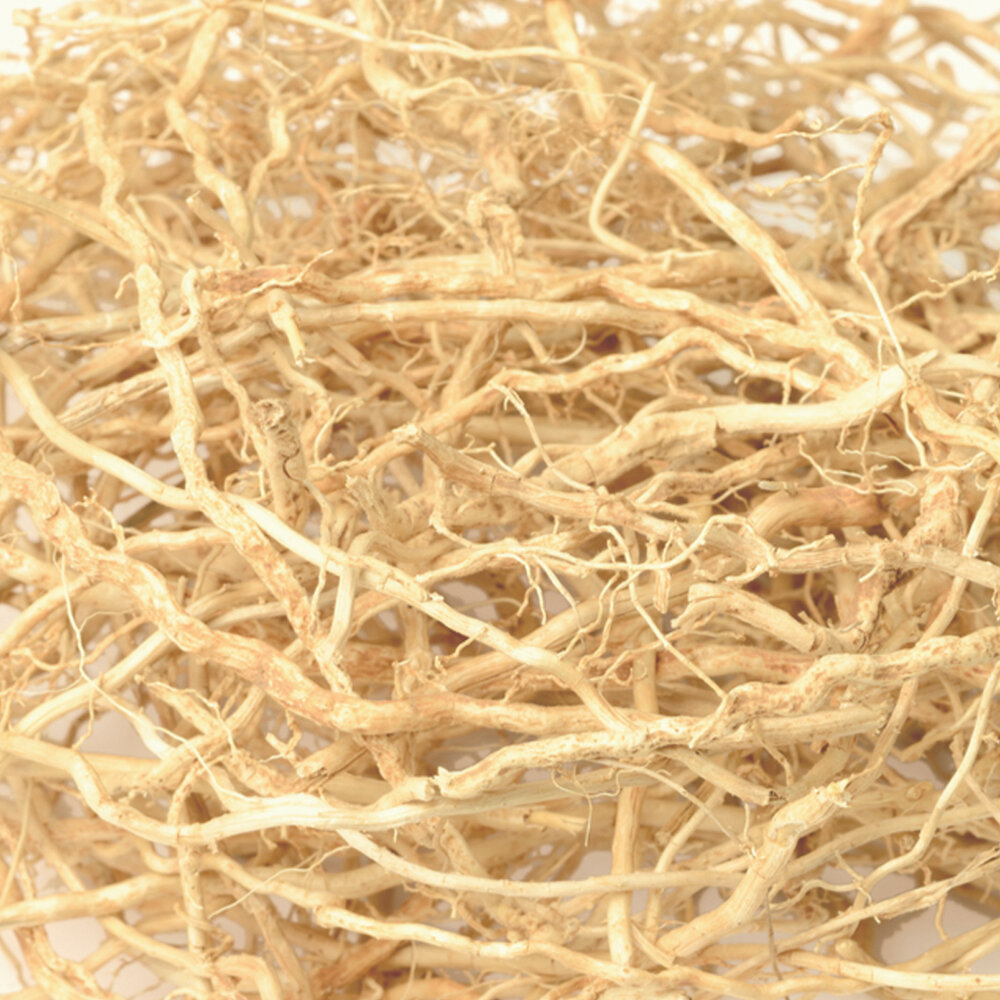 Image 1 of 2
Image 1 of 2

 Image 2 of 2
Image 2 of 2



Vetiver Terpenes
Premium Natural Ingredient for Perfumery
Vetiver Terpenes (CAS 8016-96-4) is a terpene-focused fraction derived from Vetiveria zizanioides, obtained through selective distillation of vetiver root oil. Unlike full-spectrum vetiver oil, this grade highlights the lighter, volatile woody-terpenic elements, often featuring more floral-fruity brightness and less earthy density. Its aroma is marked by humid, rooty depth layered with unexpected pairing flexibility—most notably with citrus notes like grapefruit. This material serves both as a structural blender and a modifier in woody-green accords, modern fougères, and transparent chypres.
Premium Natural Ingredient for Perfumery
Vetiver Terpenes (CAS 8016-96-4) is a terpene-focused fraction derived from Vetiveria zizanioides, obtained through selective distillation of vetiver root oil. Unlike full-spectrum vetiver oil, this grade highlights the lighter, volatile woody-terpenic elements, often featuring more floral-fruity brightness and less earthy density. Its aroma is marked by humid, rooty depth layered with unexpected pairing flexibility—most notably with citrus notes like grapefruit. This material serves both as a structural blender and a modifier in woody-green accords, modern fougères, and transparent chypres.
Premium Natural Ingredient for Perfumery
Vetiver Terpenes (CAS 8016-96-4) is a terpene-focused fraction derived from Vetiveria zizanioides, obtained through selective distillation of vetiver root oil. Unlike full-spectrum vetiver oil, this grade highlights the lighter, volatile woody-terpenic elements, often featuring more floral-fruity brightness and less earthy density. Its aroma is marked by humid, rooty depth layered with unexpected pairing flexibility—most notably with citrus notes like grapefruit. This material serves both as a structural blender and a modifier in woody-green accords, modern fougères, and transparent chypres.
Natural Ingredient Overview
🔎 Chemical name: Terpene fraction from Vetiveria zizanioides
🧪 Synonyms: Vetiver fraction, Vetiver terpenic heart
🧬 Chemical Formula: Complex mixture (terpenes and sesquiterpenes)
📂 CAS N°: 8016-96-4
📘 FEMA: 3109
⚖️ MW: Not applicable (mixture)
📝 Odor type: Woody, Earthy
📈 Odor Strength: Medium
👃🏼 Odor Profile: Humid rooty wood, with floral and citrus-fruity nuances; lacks deep vetiveryl density
⚗️ Uses: Modifier for citrus-woody bases, modern fougères, aldehydic blends, grapefruit pairings
🧴 Appearance: Light amber to brown viscous liquid
What is Vetiver Terpenes?
Vetiver Terpenes is a selective fraction distilled from the rootlets of Vetiveria zizanioides, capturing the more volatile constituents—particularly sesquiterpenes and lighter oxygenated molecules—responsible for the opening and mid-heart tonalities of vetiver oil. These fractions are typically low in vetiverol and vetiveryl acetate, making them brighter, less earthy, and more diffusively woody. Unlike complete vetiver oils that lean heavily into base note structure, vetiver terpenes operate across the heart and upper base, offering clarity and lift.
This grade is especially useful when formulators seek the signature of vetiver without its darker, humid aspects.
Olfactory Profile and Perfumery Applications
Vetiver Terpenes presents a nuanced aroma: woody and earthy at its core, but more humid and open, layered with delicate floral-citrus brightness. The absence of deep fixative components makes it less grounding but more versatile as a supportive modifier in:
Modern fougères
Woody-green or citrus-woody compositions
Transparent chypres
Fragrances requiring grapefruit-vetiver synergy
It is particularly effective at softening aldehydes, enhancing aromatic top notes, and linking citrus openings with dry woody finishes. While less persistent than full vetiver oil, its clarity and blending power are assets in modern olfactory architecture.
Industrial and Technical Uses
Due to its lighter molecular profile, Vetiver Terpenes is also used in:
Fragrance solubility-sensitive systems
Natural-inspired deodorants and hair care
Household and ambiance perfumery (e.g. fabric sprays, candle bases)
In flavor chemistry, the asparagus-like head notes from terpenic vetiver fractions have niche applications in vegetable-flavored preserves or green pea replicates.
Regulatory and Safety Overview
IFRA Restrictions: None at current standard concentrations
EU Allergens: May contain minor traces of natural linalool, limonene, farnesol
FEMA GRAS Number: 3109 — Approved for flavoring (minor use)
ECHA Classification: Not hazardous under normal use
REACH Registration: Registered under fragrance usage category
Toxicology Notes: Light fractions are generally well tolerated; lower sensitization than full vetiver
✅ No regulatory concerns reported at typical fragrance usage levels.
Ingredient Connections and Synergies
Vetiver Terpenes differs from other vetiver derivatives in weight and olfactory impact:
Patchouli Light Indonesia Oil – Shares a lifted, clean profile suitable for modern woody-fresh blends
Vetiver Oil – Heavier, fixative-focused material rich in vetiverol and esters
Vetiveryl Acetate – The refined, almost colorless ester version—used when depth and transparency must coexist
Cedarwood Virginia Oil – Complements terpenic woodiness in fougère-citrus accords
Its ability to pair with grapefruit oil, ionones, aldehydes, and green floral elements makes it particularly versatile in bridging top to heart in bright masculine and genderless compositions.
Sources
Perfume and Flavor Materials of Natural Origin, S. Arctander (1961)
Chrysopogon zizanioides. (2020, septembre 27). Wikipédia, l'encyclopédie libre. Page consultée le 16:45, septembre 27, 2020 à partir de http://fr.wikipedia.org/w/index.php?title=Chrysopogon_zizanioides&oldid=175085317
Steffen Arctander – Perfume and Flavor Materials of Natural Origin
IFRA Standards Documentation
ECHA Substance Information
FEMA GRAS Database
Fulvio Ciccolo – Scentspiracy Technical Archive
Raw material data (IFF, Firmenich, Symrise)





